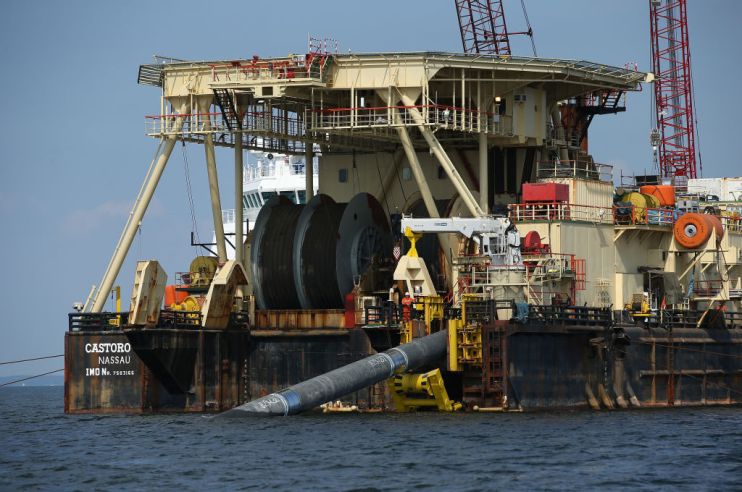Reduced flows return to Nord Stream pipeline as winter crisis looms across Europe

Nord Stream 1 has begun pumping gas into Europe again, following a 10-day outage this month, easing Europe’s immediate fears of a supply shock after Russian President Vladimir Putin warned flows could be cut further or stopped.
Supplies via Nord Stream 1, which runs under the Baltic Sea to Germany, were halted for maintenance on 11 July.
However, gas flows are only at 40 per cent of capacity, in line with levels recorded prior to the maintenance work.
Gas flows into Germany had been cut 60 per cent, amid economic conflict between the Kremlin and the West following Russia’s invasion of Ukraine.
The European Union (EU) has imposed a raft of sanctions on Russia over the past five months, including banning Russian coal imports and seaborne oil shipments.
Russia has retaliated by halting or severely reducing gas flows into 12 EU member states, which refused to pay for gas in roubles.
It has also blamed sanctions for delaying the return of a pipeline turbine that Siemens Energy was servicing in Canada, and for the general reduction in gas flows from Nord Stream 1.
That turbine is reportedly on its way back, but Gazprom said on Wednesday it had not received documentation to reinstall it.
It has argued the return of the turbine and maintenance of other gear was needed to keep the pipeline running safely.
Weeks of supply disruptions have hampered European efforts to refill gas storage this winter, raising the risk of rationing this winter during the coldest months of the year when demand is at its peak.
Harry Woolman, analyst for global capital markets at Validus Risk Management told City A.M.: ““Whilst these headlines eased some of the downward pressure on the euro, it does not detract from the overarching concern – Russia remains in control of more than one-third of the EU’s gas supply. Vladimir Putin has been very explicit in stating that unless disputes over sanctioned pipeline components are resolved, flow through the pipeline will be tightly curbed. Putin’s comments only compound supply concerns instigated from Gazprom’s declaration of a force majeure on 14 July.”
EU scrambles to secure supplies
To try to prevent a winter supply crunch, the European Commission proposed yesterday a voluntary target for all EU states to cut gas use by 15 per cent from August to March compared to usage in same period of 2016-2021.
The Commission’s proposal would enable Brussels to make the target mandatory in a supply emergency.
Gazprom has a monopoly on Russian gas exports by pipeline.
EU Commission President Ursula von der Leyen warned yesterday that Russia was blackmailing Europe, and that the EU had to prepare for the worst.
She said: “Russia is blackmailing us. Russia is using energy as a weapon,”
The EU is currently targeting 80 per cent capacity across the continent’s gas storage facilities, while the International Energy Agency has revealed the bloc needs 90 per cent capacity if Russia turns off the taps.
Currently, the storage levels are at around 65 per cent.
European states have been chasing alternative supplies, although the global gas market was stretched even before the Ukraine crisis.
The EU is likely to rely on the US, Norway and Middle East to provide supplies, including liquefied natural gas.
Craig Erlam, senior markets analyst at OANDA believed that Europe needed end its “energy relationship as soon as possible” to avoid being vulnerable to “the aggression of the Kremlin”.
He told City A.M.: “It will still take time to replace Russian gas because of the infrastructure that will be required but the desire to do so will not be lessened by Gazprom turning the taps back on. Europe remains vulnerable going into the winter as its reserves are well below where they need to be. If Europe wants to avoid an anxious six months, it should at least push for households and businesses to avoid waste and save where possible.”
Meanwhile, Bob Ryan, chief commodities strategist for BCA Research said; “We continue to expect a cut-off of Russian natural gas shipments to Europe, in addition to the 60 per cent of volumes that already have been cut.”